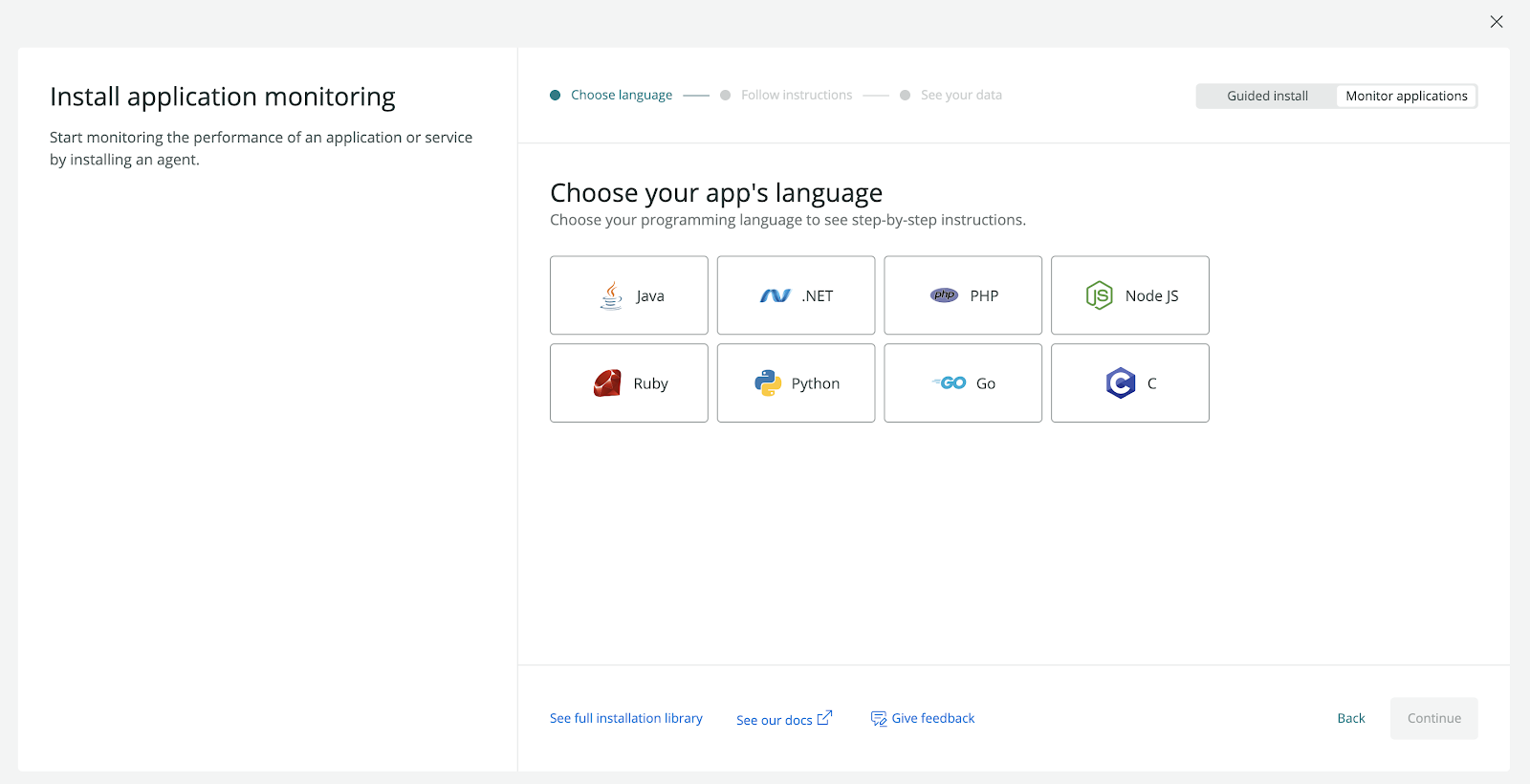Archives
- By thread 4434
-
By date
- June 2021 10
- July 2021 6
- August 2021 20
- September 2021 21
- October 2021 48
- November 2021 40
- December 2021 23
- January 2022 46
- February 2022 80
- March 2022 109
- April 2022 100
- May 2022 97
- June 2022 105
- July 2022 82
- August 2022 95
- September 2022 103
- October 2022 117
- November 2022 115
- December 2022 102
- January 2023 88
- February 2023 90
- March 2023 116
- April 2023 97
- May 2023 159
- June 2023 145
- July 2023 120
- August 2023 90
- September 2023 102
- October 2023 106
- November 2023 100
- December 2023 74
- January 2024 75
- February 2024 75
- March 2024 78
- April 2024 74
- May 2024 108
- June 2024 98
- July 2024 116
- August 2024 134
- September 2024 130
- October 2024 141
- November 2024 171
- December 2024 115
- January 2025 216
- February 2025 140
- March 2025 220
- April 2025 8
-
Not your grandmother’s capitalism: Meet tomorrow’s socially conscious capitalist
McKinsey&Company
Profit and purpose .

Up to good In the news • ‘Impatient capital.’ This year is looking like a landmark time for proxy battles, specifically around environmental, social, and governance (ESG) shareholder proposals. Shareholders are amassing support for numerous, wide-ranging societal issues that include carbon emissions, pay equity, and transparency into discrimination and harassment allegations. If this year’s extensive proposals pass, or even gain serious support, the door may very well open to even more such proposals next year. As one expert put it, “Formerly patient capital has become impatient.” [WSJ] • ‘Yes, both.’ There’s an underlying tension within the ESG space: Should you invest in companies that do good societally, environmentally, and governance-wise, full stop, or in companies that aren’t doing badly within those dimensions and have stronger financial performance? To truly effect change, the ideological case must be combined with the economic, says Wharton School of Business professor and ESG expert Witold Henisz. [Wharton] 
“You realize that you can’t be a successful company if the planet is on fire. You can’t be a successful company if social division is causing the political order to break down.” 
On McKinsey.com • ___ capitalism. About a decade ago, Fortune Media CEO and journalist Alan Murray began noticing a shift in the conversation about capitalism, specifically around the social impact of business. He heard phrases like “conscious capitalism,” “compassionate capitalism,” and “inclusive capitalism,” pointing to a larger sense that companies weren’t doing as much as they could to positively impact society. That’s led to the more recent stakeholder capitalism movement, which, Murray notes, is here to stay. • Socially conscious. Companies today are uniting profits with social purpose, and that’s a marked shift from how they once generally avoided controversial topics that may not have affected their bottom line, according to Murray. He spoke to McKinsey Publishing’s Raju Narisetti about his new book, Tomorrow’s Capitalist: My Search for the Soul of Business, for a recent edition of Author Talks. Read the full interview for the fundamental shifts Murray’s seen in how CEOs are tackling social issues, and why saying nothing is no longer an option. — Edited by Justine Jablonska Do some good 
Was this forwarded to you? Sign up here. Or send us feedback — we’d love to hear from you. 

Follow our thinking 


This email contains information about McKinsey’s research, insights, services, or events. By opening our emails or clicking on links, you agree to our use of cookies and web tracking technology. For more information on how we use and protect your information, please review our privacy policy. You received this email because you subscribed to the On Point newsletter. Manage subscriptions | Unsubscribe Copyright © 2022 | McKinsey & Company, 3 World Trade Center, 175 Greenwich Street, New York, NY 10007
by "McKinsey On Point" <publishing@email.mckinsey.com> - 12:22 - 25 May 2022 -
Marketing in the metaverse: An opportunity for innovation and experimentation
the Daily read
Understand digital strategies .
Share this email 



AN ARTICLE A DAY, PICKED BY OUR EDITORS 
The metaverse: So much has been said about it, but what is it exactly? Although many continue to debate its definition, the metaverse can be characterized as an evolution of today’s internet—and an opportunity for marketers to engage consumers in new ways via immersive digital worlds. Now’s the time to adopt a test-and-learn mindset and begin experimenting in the metaverse, moving on quickly from failures and capitalizing on successes. A new article lays out how organizations can think through their metaverse marketing strategies for the future, and why the metaverse is here to stay. Don’t miss this must-read piece. — Joyce Yoo, digital editor, New York 
Marketing in the metaverse: An opportunity for innovation and experimentation Although widespread adoption of the metaverse may take some time, leading brands are already rewriting the rules of marketing. Understand digital strategies 

Quote of the Day “When we listen to anxiety as information that’s energizing us, instead of frightening and depleting us, it helps us be more innovative and creative.” —Tracy Dennis-Tiwary, cofounder and CSO at Wise Therapeutics, on what having a healthy mindset about anxiety looks like in a recent Author Talks interview 
Chart of the Day 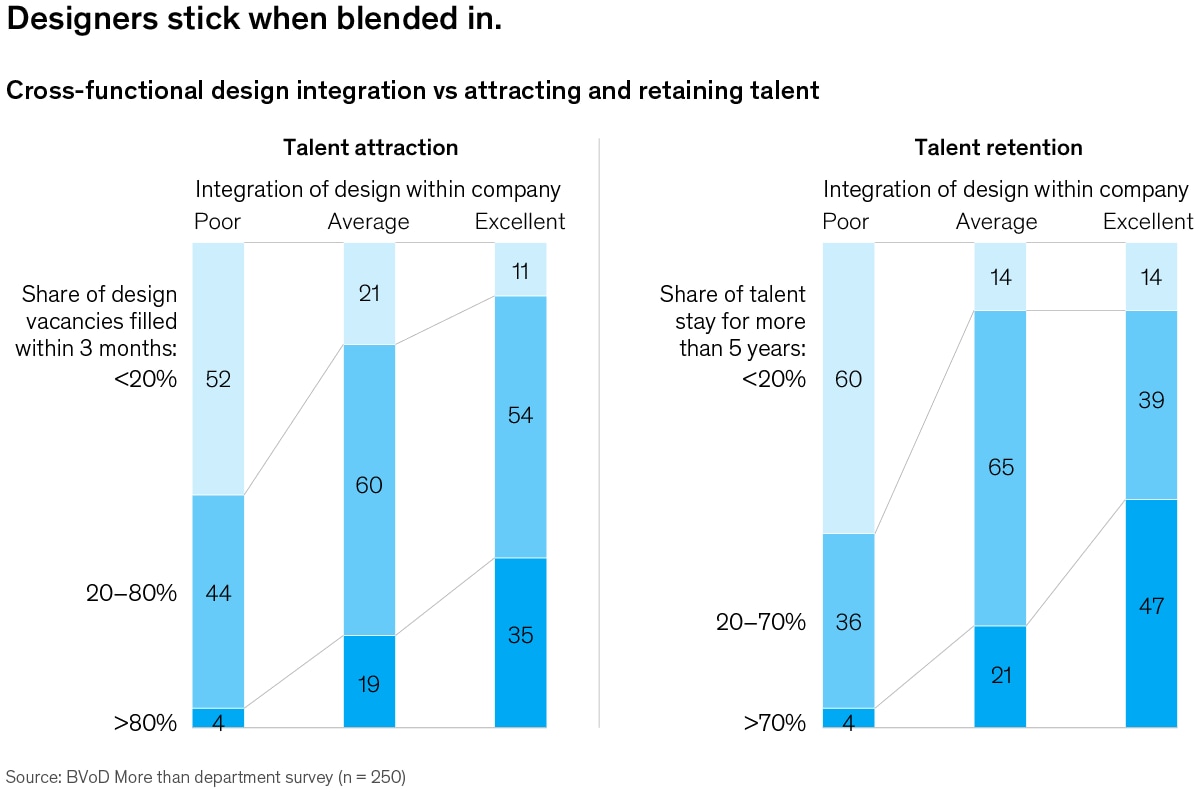
See today’s chart 
Also New 

The net-zero transition in the wake of the war in Ukraine: A detour, a derailment, or a different path? The invasion of Ukraine will, at least initially, complicate the transition path to a net-zero economy, but this tragic development could still prove to be a turning point in accelerating progress in the medium run. Understand global events 


Trying to boost corporate travel sales? Five questions for airline executives As airlines try to hasten the recovery of the highly profitable business travel segment, they should steer clear of five common sales pitfalls. Fly high 


The role of space in driving sustainability, security, and development on Earth A new report reveals five actions that leaders can take to contribute to economic development, advance global security and sustainability, and make space a safe and globally accessible domain. Shoot for the stars 


Follow our thinking 



Share these insights Did you enjoy this newsletter? Forward it to colleagues and friends so they can subscribe too.
Was this issue forwarded to you? Sign up for it and sample our 40+ other free email subscriptions here.This email contains information about McKinsey’s research, insights, services, or events. By opening our emails or clicking on links, you agree to our use of cookies and web tracking technology. For more information on how we use and protect your information, please review our privacy policy. You received this email because you subscribed to the Daily Read newsletter. Manage subscriptions | Unsubscribe Copyright © 2022 | McKinsey & Company, 3 World Trade Center, 175 Greenwich Street, New York, NY 10007
by "McKinsey Daily Read" <publishing@email.mckinsey.com> - 06:09 - 24 May 2022 -
Bias Busters: When the crowd isn’t necessarily wise
McKinsey&Company
Make bold moves .
Share this email 



New from McKinsey Quarterly 
Bias Busters: When the crowd isn’t necessarily wise Leaders need to recognize herd mentality when it happens—and explore the contrarian view to help break the spell. Make bold moves 



Related Reading 
Bias busters: Getting both sides of the story 

Explore McKinsey on Books 


Follow our thinking 


McKinsey Insights - Get our latest
thinking on your iPhone, iPad, or Android


Share these insights Did you enjoy this newsletter? Forward it to colleagues and friends so they can subscribe too.
Was this issue forwarded to you? Sign up for it and sample our 40+ other free email subscriptions here.This email contains information about McKinsey’s research, insights, services, or events. By opening our emails or clicking on links, you agree to our use of cookies and web tracking technology. For more information on how we use and protect your information, please review our privacy policy. You received this email because you subscribed to our McKinsey Quarterly alert list. Manage subscriptions | Unsubscribe Copyright © 2022 | McKinsey & Company, 3 World Trade Center, 175 Greenwich Street, New York, NY 10007
by "McKinsey Quarterly" <publishing@email.mckinsey.com> - 04:16 - 24 May 2022 -
When will autonomous vehicles finally rule the road? When the price is right.
McKinsey&Company
Driving down autonomous mobility’s cost .

Ghost in the machine In the news • Call it like it is. Should self-driving cars be marked as such? Arguments against labeling include the idea that if self-driving cars are easily identifiable, human drivers may react to them differently, throwing off the machine learning intended to respond to people’s normal driving habits. But on balance, labeling wins the debate, says one science and technology policy professor. The rules of the road need to evolve to account for the driving habits of robots, and that will start with being able to spot them. [MIT] • The road less traveled. It’s going to take more than self-driving cars to make autonomous driving a normal part of daily life. Roads also need to be modernized—for example, with digital systems that alert cars when pedestrians are near (and the other way around). One start-up is partnering with state and local governments to create a network of tech-enhanced “smart roads” in the US. On those roads, drivers of some cars equipped with hands-free driving systems don’t even have to watch where they’re going. [Axios] 
Despite their additional costs, robo-taxis could become price competitive with private, manually operated cars and even transit services in the coming decade. 
On McKinsey.com • Data driven. To understand how the autonomous-vehicle (AV) market could evolve, McKinsey developed a Mobility Market Model using data from about 2,800 cities and rural regions in more than 110 countries. While costs for AV services are very high today, they could decline significantly in the next ten years as the technology advances, McKinsey analysis finds. The cost per mile for a personal robo-taxi trip could amount to just 40 to 50% of a driver-based ride-hailing trip. • The road ahead. Automakers, suppliers, transit agencies, and tech players all want to know how much autonomous mobility will cost and the size of the opportunity. Making these calculations is complex and depends on many factors, including the population density of cities, vehicle type, and operational scale. Read on to learn how the costs of shared AV services could progress over the coming decade, along with what may speed up consumer adoption of robo-taxis. — Edited by Katy McLaughlin Be driven 
Was this forwarded to you? Sign up here. Or send us feedback — we’d love to hear from you. 

Follow our thinking 


This email contains information about McKinsey’s research, insights, services, or events. By opening our emails or clicking on links, you agree to our use of cookies and web tracking technology. For more information on how we use and protect your information, please review our privacy policy. You received this email because you subscribed to the On Point newsletter. Manage subscriptions | Unsubscribe Copyright © 2022 | McKinsey & Company, 3 World Trade Center, 175 Greenwich Street, New York, NY 10007
by "McKinsey On Point" <publishing@email.mckinsey.com> - 12:51 - 24 May 2022 -
How to use anxiety to your advantage
the Daily read
Develop a healthy mindset .
Share this email 



AN ARTICLE A DAY, PICKED BY OUR EDITORS 
Anxiety is an emotion all of us experience, but there’s a lot of confusion and misinformation about what it really is. Having a healthy outlook on anxiety means viewing it as a part of being human, not as a problem to solve, says Dr. Tracy Dennis-Tiwary in a new Author Talks interview. Get perspective on how this mindset shift can help us be more innovative and creative, and how anxiety can be a source of strength and resilience. Be sure to check it out. — Joyce Yoo, digital editor, New York 
Author Talks: Make anxiety your ally How can we reclaim our relationship with anxiety, so it works for, and not against, us? Develop a healthy mindset 

Quote of the Day —McKinsey senior partner Cindy Levy in a new video on what the 2022 Annual Meeting in Davos means to her. 
Chart of the Day 
See today’s chart 
Also New 

Advanced recycling: Opportunities for growth As interest in the circular economy grows, emerging recycling technologies that are complementary with mechanical recycling are accelerating. Understand green solutions 


Solving the net-zero equation in the United States Achieving net-zero carbon emissions will require investment and action on a massive scale. How can the United States meet the challenge of this moment? Build a better planet 


Procurement, early warning systems, and the next disruption A pandemic, inflation, and geopolitical conflict are affecting global supply chains. We offer an approach companies can use to avoid product shortages and mitigate the effects of price volatility. Understand the risks 


Follow our thinking 



Share these insights Did you enjoy this newsletter? Forward it to colleagues and friends so they can subscribe too.
Was this issue forwarded to you? Sign up for it and sample our 40+ other free email subscriptions here.This email contains information about McKinsey’s research, insights, services, or events. By opening our emails or clicking on links, you agree to our use of cookies and web tracking technology. For more information on how we use and protect your information, please review our privacy policy. You received this email because you subscribed to the Daily Read newsletter. Manage subscriptions | Unsubscribe Copyright © 2022 | McKinsey & Company, 3 World Trade Center, 175 Greenwich Street, New York, NY 10007
by "McKinsey Daily Read" <publishing@email.mckinsey.com> - 06:11 - 23 May 2022 -
Spotlight on Davos: Securing the economic recovery and shaping a new era of growth
McKinsey&Company
Your daily update on WEF22 .
Share this email 



New from McKinsey & Company Spotlight on Davos: Securing the economic recovery and shaping a new era of growth Two decades of financial turbulence and more than ten years of heavy central bank intervention have been punctuated by the pandemic, high inflation, and the continuing war in Ukraine. How will leaders secure economic recovery and drive balanced growth, globalization, and development? Explore these insights to understand the current underlying health and resilience of the global economy, and tune into McKinsey’s LinkedIn Live on Tuesday at 5 a.m. ET for a session on Financing Resilient Economies and Societies, featuring McKinsey global managing partner Bob Sternfels at #WEF22. Read more 

Navigating inflation: A new playbook for CEOs Few chief executives have faced the challenge of leading a company through an inflationary spike like today’s. Lessons from strong leaders and bold action can help CEOs make the decisions that only they can make. Make smart moves 
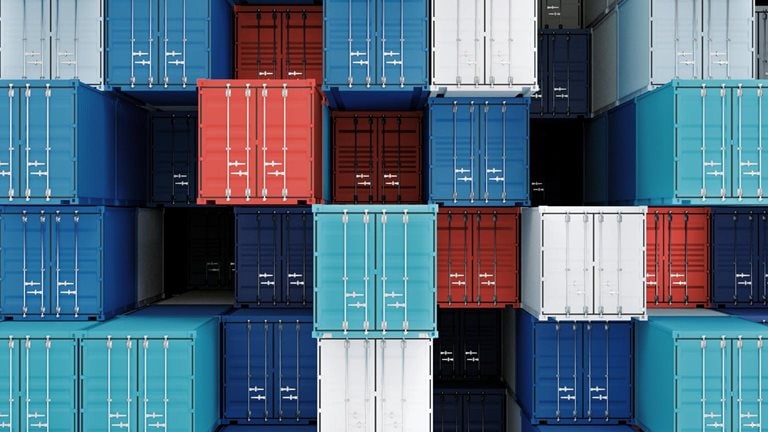

Global Economics Intelligence executive summary, April 2022 Amidst high inflation and the continuing war in Ukraine, strong demand persists; forecasting institutions trim growth estimates. Understand worldwide trends 


Economic conditions outlook, March 2022 Worries about geopolitical conflicts, among other risks to growth, now exceed executives’ concerns about the COVID-19 pandemic. Overall economic optimism continues to decline. Understand the moment 


The rise and rise of the global balance sheet: How productively are we using our wealth? Net worth has tripled since 2000, but the increase mainly reflects valuation gains in real assets, especially real estate, rather than investment in productive assets that drive our economies. Download the full report 


Will productivity and growth return after the COVID-19 crisis? Bold innovation by some firms under pressure of the pandemic could deliver a productivity dividend, but that depends on corporate action broadening and robust demand. Read the full report 
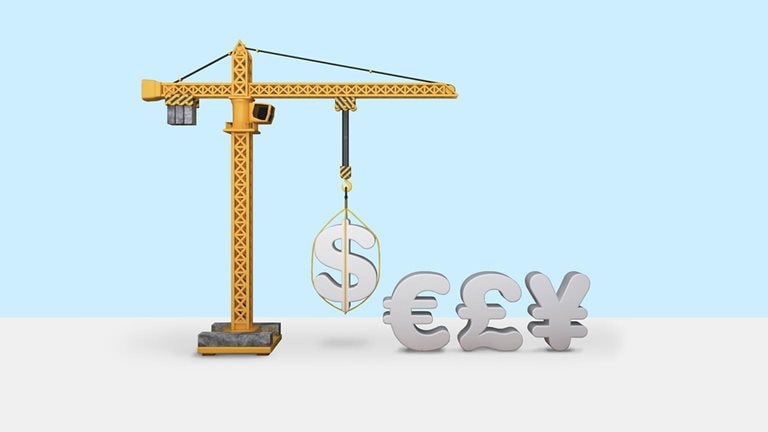

Capital investment is about to surge: Are your operations ready? By 2027, about $130 trillion will flood into capital projects. But few organizations today could deliver with the speed and operational efficiency the influx demands. Prepare for growth 


From risk management to strategic resilience Senior executives at leading companies reveal their commitment to move from defensive risk management to a forward-looking stance based on strategic resilience. Plan for success 


Forward Thinking on the transformative role of intangible assets in companies and economies with Jonathan Haskel and Stian Westlake “William Blake talked about the dark Satanic mills, these inhuman pieces of tangible capital. Intangible capital is in some ways about what makes us human. It’s about ideas, and it’s about relationships. It’s about expressiveness. Some people may ask whether we should be making that the basis of the economy. But we would argue that this is actually making those things that matter to us as humans more central to our thriving.” Tune into the podcast 
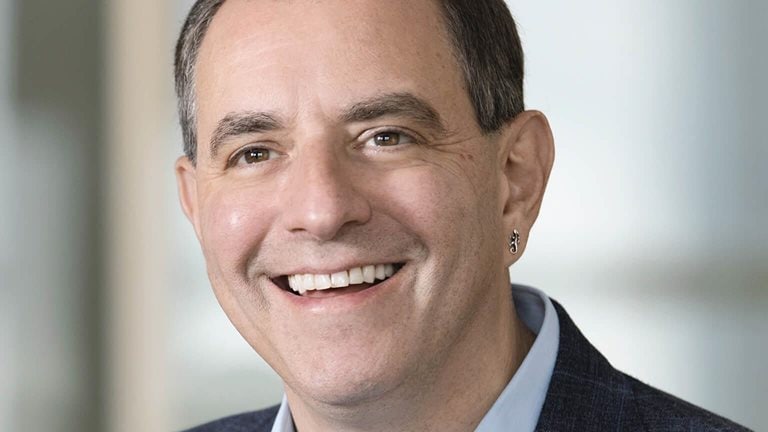

Forward Thinking on pandemic paradoxes, labor market myths, and ‘cowboy capitalism’ with David Autor A leading US economist talks about what has changed in the pandemic, the rise of China, the globalization of trade, and spreading automation. Understand market trends 


Risk, resilience, and rebalancing in global value chains Companies need an understanding of their exposure, vulnerabilities, and potential losses to inform resilience strategies. Read the report 
MORE FROM MCKINSEY 

McKinsey and the World Economic Forum As a strategic partner, McKinsey supports the World Economic Forum’s mission of improving the state of the world. Learn more 
To see more essential reading on topics that matter, visit McKinsey Themes. — Curated by Eleni Kostopoulos, a digital publishing manager in New York 

Follow our thinking 


McKinsey Insights - Get our latest
thinking on your iPhone, iPad, or Android


Share these insights Did you enjoy this newsletter? Forward it to colleagues and friends so they can subscribe too.
Was this issue forwarded to you? Sign up for it and sample our 40+ other free email subscriptions here.This email contains information about McKinsey’s research, insights, services, or events. By opening our emails or clicking on links, you agree to our use of cookies and web tracking technology. For more information on how we use and protect your information, please review our privacy policy. You received this email because you subscribed to our McKinsey Global Institute alert list. Manage subscriptions | Unsubscribe Copyright © 2022 | McKinsey & Company, 3 World Trade Center, 175 Greenwich Street, New York, NY 10007
by "McKinsey & Company" <publishing@email.mckinsey.com> - 02:10 - 23 May 2022 -
A leader’s guide to new and improved talent strategies
Leading Off
Working better .
Share this email 



ESSENTIALS FOR LEADERS AND THOSE THEY LEAD 
At about this time in 2021, when Leading Off last covered talent management, the great exodus of employees from the workplace had just begun. A year later, as we settle into the new normal, it’s time to check in on how leaders are handling talent challenges—which continue to be severe. Are you able to keep people from leaving? Are you addressing the underlying workplace issues? This week, let’s explore the current state of play in the talent game and how some emerging trends may reshape it in the coming years. AN IDEA 
Adopt an entirely new set of tactics The so-called Great Resignation could last for several more years as people continue to reevaluate their personal and professional lives after the pandemic. Unlike previous cycles of downturn and recovery, this attrition is marked by many people leaving their employers without another job in hand or quitting the workforce entirely. Some who quit return but do so only if they’re assured of flexibility, adequate pay, and a sustainable workload. Employees want to be valued as whole people, not just workers; they expect employers to provide a strong company culture, a sense of community, caring coworkers, and career mobility—and may not stick around if those needs aren’t met. Leaders may need to revamp their talent strategies altogether, rethinking compensation and benefits and factoring in other employee needs such as mental and physical well-being, psychological safety, and scheduling and staffing flexibility. 
A BIG NUMBER 780,000 That’s the number of additional tech specialists Germany will need by 2026 to meet the economy’s demand. Companies worldwide face an acute shortfall of tech talent at a time when being technologically strong is critical to success in a digital world. Traditional hiring or outsourcing won’t cut it; leaders must tackle the issue by adopting a multifaceted approach, such as setting up a focused team to manage the whole candidate experience, providing advanced planning and development tools, and creating an environment where developers and engineers are treated as innovators and active participants in the business. 

A QUOTE “We regularly confuse people with roles and confuse talent with broad skill pools. In many organizations, roles today bear no resemblance to what they’d look like if you were designing them from scratch.” That’s McKinsey’s Bill Schaninger in this podcast on the importance of getting the right people into the roles most likely to deliver value. Only a few roles are truly critical to the organization, and “everything else probably sits in a skill pool, a clustering of common skills deployed in different ways,” says Schaninger. Deriving maximum value from those skills may mean reshuffling talent, whether that involves hiring new employees or moving incumbents into jobs that are better aligned with their skills and aspirations. To fill roles so that they yield tangible returns, first evaluate the candidates’ fit, advises McKinsey’s Bryan Hancock. “Figure out exactly what you need new folks to do and assess against it,” he says. “If the incumbent is great, great. If not, you’re going to realize it in six months or 18 months or 24 months. A better fit drives better returns.” 
A SPOTLIGHT INTERVIEW 
Companies tend to overlook in-house employees for promotions or filling open roles, often because of a perceived skills gap. But matching internal workers with available jobs offers organizations “the ability to move talent dynamically,” says McKinsey’s Emily Field in this podcast on creating an internal talent marketplace. A digitally enabled talent marketplace offers visibility into your organization’s labor supply, identifying people’s skills and willingness to take on new opportunities. Rather than trying to fit candidates into rigidly defined roles, leaders can use AI-generated data to find alternative or adjacent skills that are a close match. “From a societal-impact perspective, employers are helping their employees create the skills to thrive in a new part of the organization, instead of the alternative—watching them exit,” says Field. 
MANIC MONDAY 
Make that Wednesday for most companies that offer a hybrid work schedule. Wednesday is the day workers are most likely to be in the office—if they go into the office at all. As companies try to woo employees back to their cubicles, they’re experimenting with ever-more-imaginative perks. At last count, these included live concerts, beer and wine tastings, pop-up snack stands, free food and T-shirts, and terrarium-making classes. A few companies have begun to offer commuting stipends to help ease the financial burden of trekking back to the office. And to supervise it all, some organizations are hiring chief happiness officers, mindfulness leaders, and vice presidents of employee success. Lead with talent. — Edited by Rama Ramaswami, a senior editor in McKinsey’s Stamford office 

Follow our thinking 



Share these insights Did you enjoy this newsletter? Forward it to colleagues and friends so they can subscribe too.
Was this issue forwarded to you? Sign up for it and sample our 40+ other free email subscriptions here.This email contains information about McKinsey’s research, insights, services, or events. By opening our emails or clicking on links, you agree to our use of cookies and web tracking technology. For more information on how we use and protect your information, please review our privacy policy. You received this email because you subscribed to the Leading Off newsletter. Manage subscriptions | Unsubscribe Copyright © 2022 | McKinsey & Company, 3 World Trade Center, 175 Greenwich Street, New York, NY 10007
by "McKinsey Leading Off" <publishing@email.mckinsey.com> - 02:51 - 23 May 2022 -
Heading back to the office? Three practices matter most to hybrid workers.
McKinsey&Company
See who likes hybrid most .

Building a better hybrid office In the news • Rethinking the return. As employees hesitate to return to daily commuting, bosses are relaxing the rules about going back to the office. In April, the CEO of a large US bank said that about 40% of the company’s 270,000 employees would be allowed to work partly from the office and partly from home. Wall Street and Silicon Valley employers alike are revisiting ambitious plans that asked workers to be on-site a certain number of days. In a tight labor market, managers worry that punishing workers who remain at home may push them to quit. [Bloomberg] • Taking attendance. Millions of workers have gotten used to the autonomy and flexibility that go hand-in-hand with working from home. But as companies renew calls for employees to return to the office, executives face a key decision: Should they keep tabs on worker attendance or trust that employees are doing their jobs? Although new software tools enable employers to collect data on when and how often workers are going to the office, experts say that using “bossware” (that is, surveillance software) can erode corporate culture. [NYT] 
Nearly 60% of our survey respondents working in hybrid models ranked work–life support in the top inclusion practices they want their organizations to improve. 
On McKinsey.com • Hooked on hybrid. Employees appear to be hooked on hybrid work, according to McKinsey’s new research. In a survey of more than 1,300 workers spanning three continents, 75% said that they prefer a hybrid working model. Of that group, more than two out of three said that they would likely look for jobs elsewhere if asked to return to the office full time. Companies that don’t offer opportunities for hybrid work risk losing employees, including younger workers, who without a hybrid work option are nearly 60% more likely than their older peers to leave. • What workers want. Inclusive workplaces increasingly enable companies to attract and retain top talent, McKinsey research reveals. Employees who work in an inclusive setting are seven times likelier to say that their companies are high-performing and are 47% likelier to stay. To learn what matters most to employees, McKinsey asked which inclusion practices workers want their companies to work hardest to improve. Every demographic said that three critical practices matter most in building an inclusive, hybrid workplace. — Edited by Belinda Yu Get hybrid right 
Was this forwarded to you? Sign up here. Or send us feedback — we’d love to hear from you. 

Follow our thinking 


This email contains information about McKinsey’s research, insights, services, or events. By opening our emails or clicking on links, you agree to our use of cookies and web tracking technology. For more information on how we use and protect your information, please review our privacy policy. You received this email because you subscribed to the On Point newsletter. Manage subscriptions | Unsubscribe Copyright © 2022 | McKinsey & Company, 3 World Trade Center, 175 Greenwich Street, New York, NY 10007
by "McKinsey On Point" <publishing@email.mckinsey.com> - 12:10 - 23 May 2022 -
Spotlight on Davos: Fostering global and regional cooperation
McKinsey&Company
Your daily update on WEF22 .
Share this email 



New from McKinsey & Company Spotlight on Davos: Fostering global and regional cooperation The world has endured a series of shocks over the past two years: from a global pandemic to a humanitarian catastrophe and subsequent disruptions in energy, food, and world economies. Recovery will require collaboration, within and between sectors and countries. How can leaders move from fragmentation to global collaboration to make progress in trade, prosperity, and partnerships? Explore these insights to better understand the challenges ahead, and stay tuned for more on #WEF22. Read more 

War in Ukraine: Lives and livelihoods, lost and disrupted As uncertainty weighs on decision making, scenarios can provide guidance. Understand the implications 


War in Ukraine: Twelve disruptions changing the world The war is devastating lives and roiling markets. Here we track the disruptions that seem likely to shape lives and livelihoods, beyond the immediate crisis. Navigate the crisis 


How global companies can manage geopolitical risk Global enterprises can proactively manage the threats that escalating international and internal political tensions pose to their operations, performance, and culture. A 5-pronged approach 


Overcoming global supply chain challenges McKinsey’s Tom Bartman discusses what’s causing disruptions in global supply chains and how key stakeholders are responding. Understand the issues 


Forward Thinking on the social contract in a postpandemic world with Minouche Shafik and Andrew Sheng “Our social contract is broken. And that is at the heart of why our politics is so divided and so many citizens around the world are disappointed and frustrated.” “Modern society is killing Mother Nature. And if you kill Mother Nature, you kill ourselves. We really need to achieve a social contract between us and other humanity and also Mother Nature. And this conversation is only beginning.” Two stark views on the state of today’s social contract. Tune in 
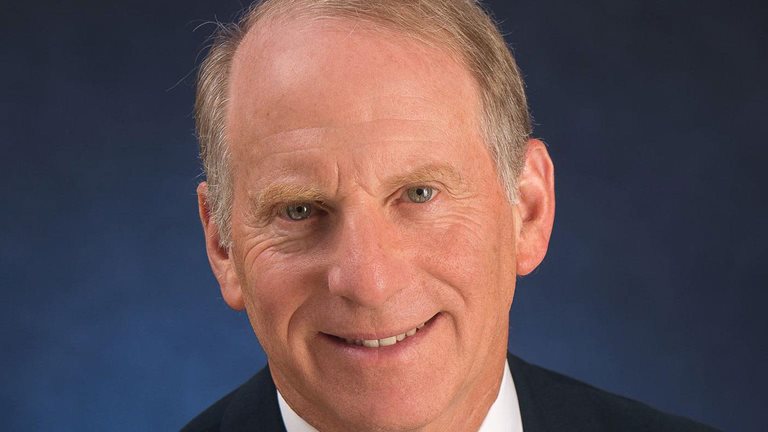

Author Talks: Richard N. Haass on making sense of a complex world In his latest book, Richard N. Haass explores how our globalized and interconnected world works and why we should be paying attention to it. Understand your impact 
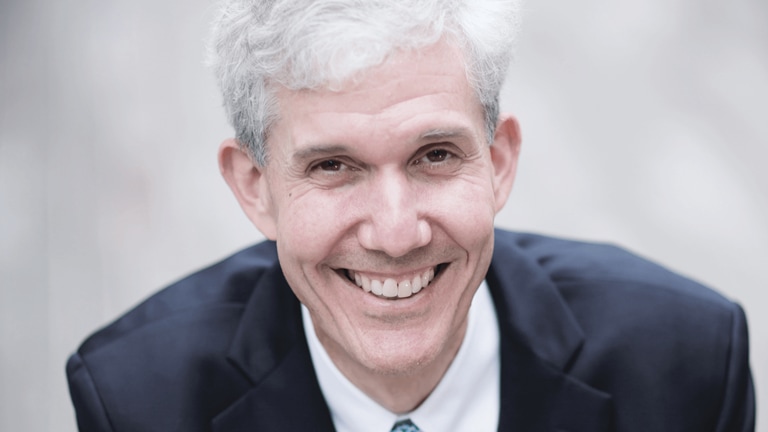

Forward Thinking on globalization and the evolving role of corporate leadership in the 21st century with Matthew Slaughter A leading economist and business school dean reflects on globalization, concluding that “we’ve learned people want to know policies will matter for them”, and that “a lot of us underestimated the possible magnitude of distribution pressures from freer trade and immigration and flows of capital.” Listen to the episode 
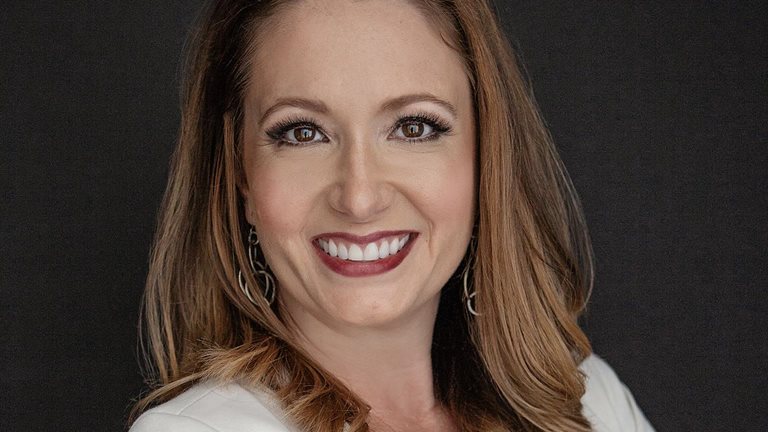

Author Talks: One billion more The global population is fast approaching the eight billion mark. A former Department of Defense consultant says not to panic. Understand global trends 
MORE FROM MCKINSEY 

McKinsey and the World Economic Forum As a strategic partner, McKinsey supports the World Economic Forum’s mission of improving the state of the world. Learn more 
To see more essential reading on topics that matter, visit McKinsey Themes. — Curated by Eleni Kostopoulos, a digital publishing manager in New York 

Follow our thinking 


McKinsey Insights - Get our latest
thinking on your iPhone, iPad, or Android


Share these insights Did you enjoy this newsletter? Forward it to colleagues and friends so they can subscribe too.
Was this issue forwarded to you? Sign up for it and sample our 40+ other free email subscriptions here.This email contains information about McKinsey’s research, insights, services, or events. By opening our emails or clicking on links, you agree to our use of cookies and web tracking technology. For more information on how we use and protect your information, please review our privacy policy. You received this email because you subscribed to our McKinsey Global Institute alert list. Manage subscriptions | Unsubscribe Copyright © 2022 | McKinsey & Company, 3 World Trade Center, 175 Greenwich Street, New York, NY 10007
by "McKinsey & Company" <publishing@email.mckinsey.com> - 11:28 - 22 May 2022 -
The week in charts
the Daily read
The semiconductor shortage, FemTech start-ups, and more .
Share this email 



ALL THE WEEK’S DATA THAT'S FIT TO VISUALIZE 
Our Charting the path to the next normal series offers a daily chart that helps explain a changing world—during the pandemic and beyond. In case you missed them, this week’s graphics explored the semiconductor shortage, FemTech start-ups, new pharmaceutical opportunities, a new era for the automotive industry, and the state of hybrid work. FEATURED CHART All chips are on the table 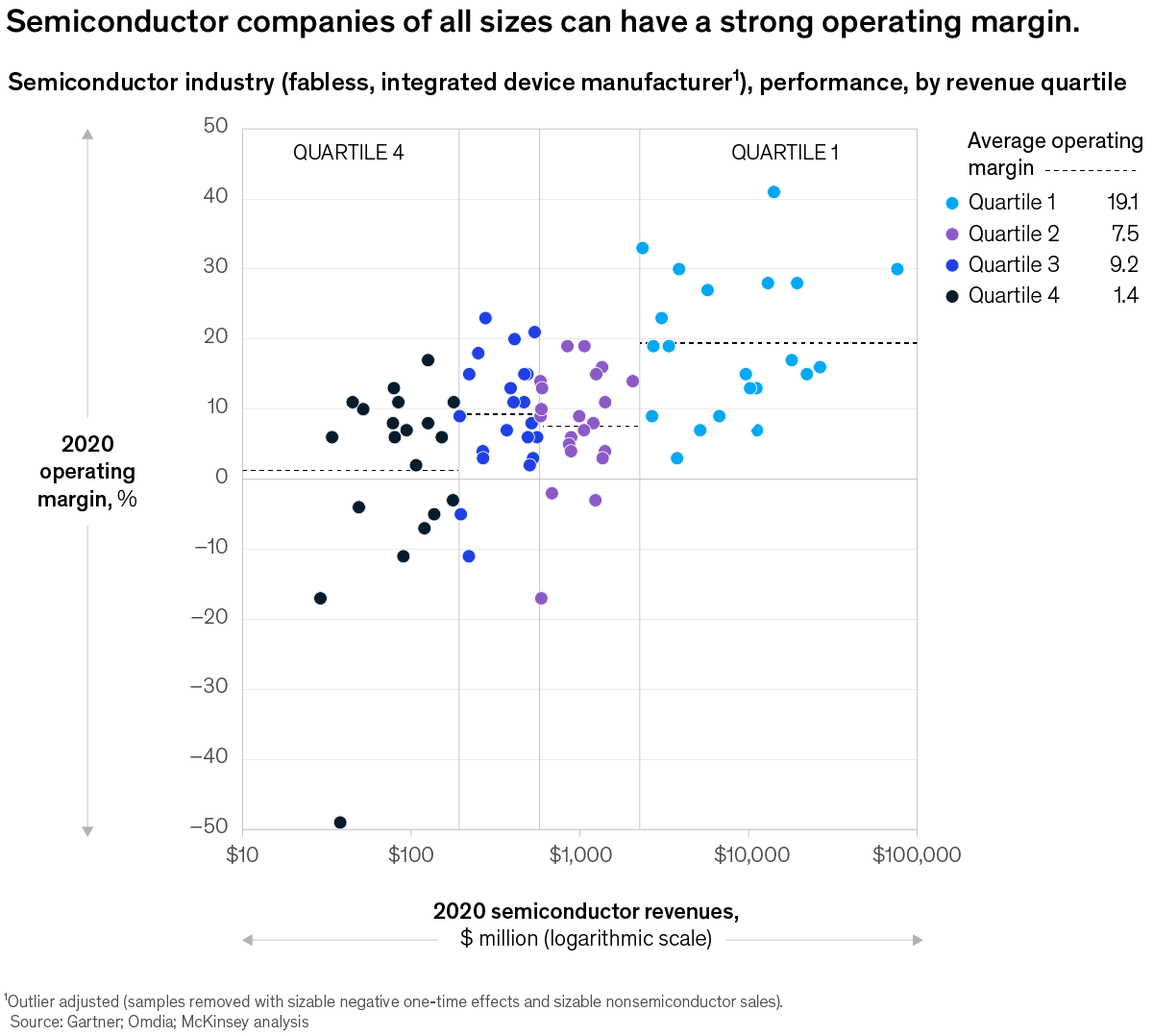
See more 



This week’s other select charts We’ve only just begun Make way for new players Charging ahead A little help from hybrid 

Follow our thinking 



Share these insights Did you enjoy this newsletter? Forward it to colleagues and friends so they can subscribe too.
Was this issue forwarded to you? Sign up for it and sample our 40+ other free email subscriptions here.This email contains information about McKinsey’s research, insights, services, or events. By opening our emails or clicking on links, you agree to our use of cookies and web tracking technology. For more information on how we use and protect your information, please review our privacy policy. You received this email because you subscribed to The Week in Charts newsletter. Manage subscriptions | Unsubscribe Copyright © 2022 | McKinsey & Company, 3 World Trade Center, 175 Greenwich Street, New York, NY 10007
by "McKinsey Week in Charts" <publishing@email.mckinsey.com> - 03:52 - 21 May 2022 -
The net-zero transition in the wake of the war in Ukraine: A detour, a derailment, or a different path?
the Daily read
Understand global events .
Share this email 



AN ARTICLE A DAY, PICKED BY OUR EDITORS 
There is still much uncertainty surrounding the long-term effects of the war in Ukraine and the humanitarian crisis it has unleashed. In the short term, the war will complicate efforts to address climate change and the path to a net-zero economy. But if leaders take bold steps to boost energy-efficiency measures and adopt renewable-energy alternatives, this could be a positive turning point that accelerates progress in the long term. Don’t miss a new article that delves into what is needed for an orderly net-zero transition and what the future could hold. — Joyce Yoo, digital editor, New York 
The net-zero transition in the wake of the war in Ukraine: A detour, a derailment, or a different path? The invasion of Ukraine will, at least initially, complicate the transition path to a net-zero economy, but this tragic development could still prove to be a turning point in accelerating progress in the medium run. Understand global events 

Quote of the Day “Every challenge and roadblock that we’ve faced is around people. That is why we are laser focused on putting systems in place to attract people early, at scale, and in a way that lets us deliver around product and engineering.” —Pradyumna Agrawal, managing director for blockchain at Temasek, on what it takes to build businesses that are scalable and sustainable in a recent episode of the Committed Innovator podcast 
Chart of the Day 
See today’s chart 
Also New 

Around the world, nurses say meaningful work keeps them going While some surveyed nurses said they plan to leave direct patient care, the effects of COVID-19 on the nursing workforce may be leveling off. Understand worker needs 


Decarbonizing the grid with 24/7 clean power purchase agreements In the global struggle to curb greenhouse-gas emissions, renewable power is taking an ever-increasing share of generation capacity. Yet the rise of wind and solar power is creating new challenges in managing the system. Understand green energy 


The McKinsey Crossword: Asian American and Pacific Islander Heritage Month 50-Down: Shang-Chi and the Legend of the Ten Rings star Simu Play now 


Follow our thinking 



Share these insights Did you enjoy this newsletter? Forward it to colleagues and friends so they can subscribe too.
Was this issue forwarded to you? Sign up for it and sample our 40+ other free email subscriptions here.This email contains information about McKinsey’s research, insights, services, or events. By opening our emails or clicking on links, you agree to our use of cookies and web tracking technology. For more information on how we use and protect your information, please review our privacy policy. You received this email because you subscribed to the Daily Read newsletter. Manage subscriptions | Unsubscribe Copyright © 2022 | McKinsey & Company, 3 World Trade Center, 175 Greenwich Street, New York, NY 10007
by "McKinsey Daily Read" <publishing@email.mckinsey.com> - 05:10 - 20 May 2022 -
Want to offer the best benefits to your multinational employees?
Want to offer the best benefits to your multinational employees?
Hi MD,
Have you wondered how to offer the best benefits to your multinational workforce?
You may know that at Remote, we have an incredible team of benefits experts with a deep understanding of local markets across the globe.
We’re passionate about creating benefits plans that help employers attract and retain the best talent in every country they want to hire in, and we see this expertise as something of a superpower. 💪
But we don’t want to keep our secrets all to ourselves!
Which is why we’ve recently published our Global Benefits Guide…
In our comprehensive guide, you can expect to learn:
- How to develop an equitable global benefits program
- How to ensure compliance with local labor laws
- How different cultural norms and expectations can impact your benefits plans
- When and how to offer benefits to contractors
... and much more!
Download our free guide now and become a benefits expert yourself. 🤓
And if you’re ready to hire workers globally and offer them the best benefits that our specialists have hand-picked in each country, it’s time to get started with Remote!
Stay ahead. Go Remote.
You received this email because you are subscribed to News & Offers from Remote Technology, Inc.
Update your email preferences to choose the types of emails you receive.
Unsubscribe from all future emailsRemote Technology, Inc.
Copyright © 2022 Remote Technology, Inc. All rights reserved.
18 Bartol St. #1163 San Francisco California
by "Remote" <hello@remote-comms.com> - 01:12 - 20 May 2022 -
Join Remote’s Community for a discussion on mental health in the workplace.
Join Remote’s Community for a discussion on mental health in the workplace.
Hi MD,
As you may know, May is Mental Health Awareness Month, and next week we’re hosting our first Community Experience to explore mental health in the workplace.
We invite you to join us for a 30-minute audio-guided walk with Jayne Morris, burnout coach, wellbeing leadership consultant, and author of Burnout to Brilliance: Strategies for Sustainable Success. We'll be going on a short walk around our own neighborhoods to explore mental health in the workplace and also share a short meditation together.We hope you’ll join us and take a step towards bringing more balance and clarity into the workplace.
Best,
Remote Community Team
Access our Choose Remote Toolkit
Includes expert insights on how to advocate for flexibility at work, find the best remote job opportunities, or relocate while keeping your job remotely!
You received this email because you are subscribed to Community Updates from Remote Technology, Inc.
Update your email preferences to choose the types of emails you receive.
Unsubscribe from all future emailsRemote Technology, Inc.
Copyright © 2022 Remote Technology, Inc. All rights reserved.
18 Bartol St. #1163 San Francisco California
by "Remote Community Team" <hello@remote-comms.com> - 10:03 - 20 May 2022 -
Revenue growth by design: Your design department has business impact
The Shortlist
Creativity drives performance .
Share this email 



Our best ideas, quick and curated | may 20, 2022 View in browser 
This week, we look at what makes a successful business design department (and no, it’s not a pricey coffee machine in a fancy loft office). Plus, worker power is on the rise—or is it? And read about our new Global Energy Perspective 2022. 
Embedding design. Building a modern, successful design department is one of four actions a CEO can take to drive revenue growth at twice the rate of industry peers, McKinsey research shows. But what makes for a successful design department and how do companies avoid siloing it off from the rest of the business? To answer these questions, we looked at data from three million—yes, million—designers and design leaders in more than 100,000 design departments, combined with their organizations’ financial performance. We also surveyed more than 250 business and design leaders and held interviews with 30 senior executives in leading design-driven companies. Part of the team. In our new report, Redesigning the design department, we found that organizational integration was the hallmark of successful design departments. Instead of trying to “protect” designers within the design studio, leading chief design officers work with the C-suite to embed designers into cross-functional teams and give them the training and the tools needed to collaborate and lead successfully. This practice was true across almost all industries that we reviewed: both B2C and B2B. We also found three core integration themes: Cross-functional organizational structure. The best design teams had designers organized with dotted lines to their design departments (for knowledge sharing, tools, and community) but hard lines to their project team. All project team members—including designers, marketeers, financiers, and project managers—had a common set of financial incentives linked to time, cost, revenue, and customer satisfaction. And this included putting designers into cross-functional teams to improve the company itself, not just the products and services. Nurturing design talent. Leading design departments developed their designers through training, secondments, and mentorship in business and technology to better integrate them into the company. They also recognized that designers put purpose at the top of their list of reasons to seek new employment. The best design departments recognize this and empower their designers with projects where they can make tangible improvements to products, to the organization itself, and to wider society. Tools and infrastructure. For both physical and digital design, it was important to have collaboration tools that enabled designers to deliver their best work. Particularly, the digital domain we analyzed saw the introduction of more than 30 well-regarded new tools in the past four years. However, the research did not suggest that there was “one tool to rule them all,” but rather that “tool vitality” mattered. In addition, the rate at which design departments pilot, scale, and retire tools was a positive indicator of department health. And we believe this will be even more important as new generative, AI-based tools become more prevalent. Big picture. Organizations that get these three themes right see benefits not only in financial performance but also through having happier employees, greater innovation, and stronger environmental, social, and governance impact. 
OFF THE CHARTS Want not, waste not? In 2020, Californians bought and wore 510,000 to 530,000 tons of clothing. Some 500,000 of those tons will eventually enter landfills—covering an area about 3.5 times the size of Los Angeles. More than 97 percent of the textiles used in this clothing are virgin materials, and less than 1 percent of the materials worn today will resurface in clothing manufactured tomorrow. The key to changing those numbers lies in circularity—specifically, in building a closed loop for recycling materials back into the manufacturing process, reducing both waste and reliance on natural resources. 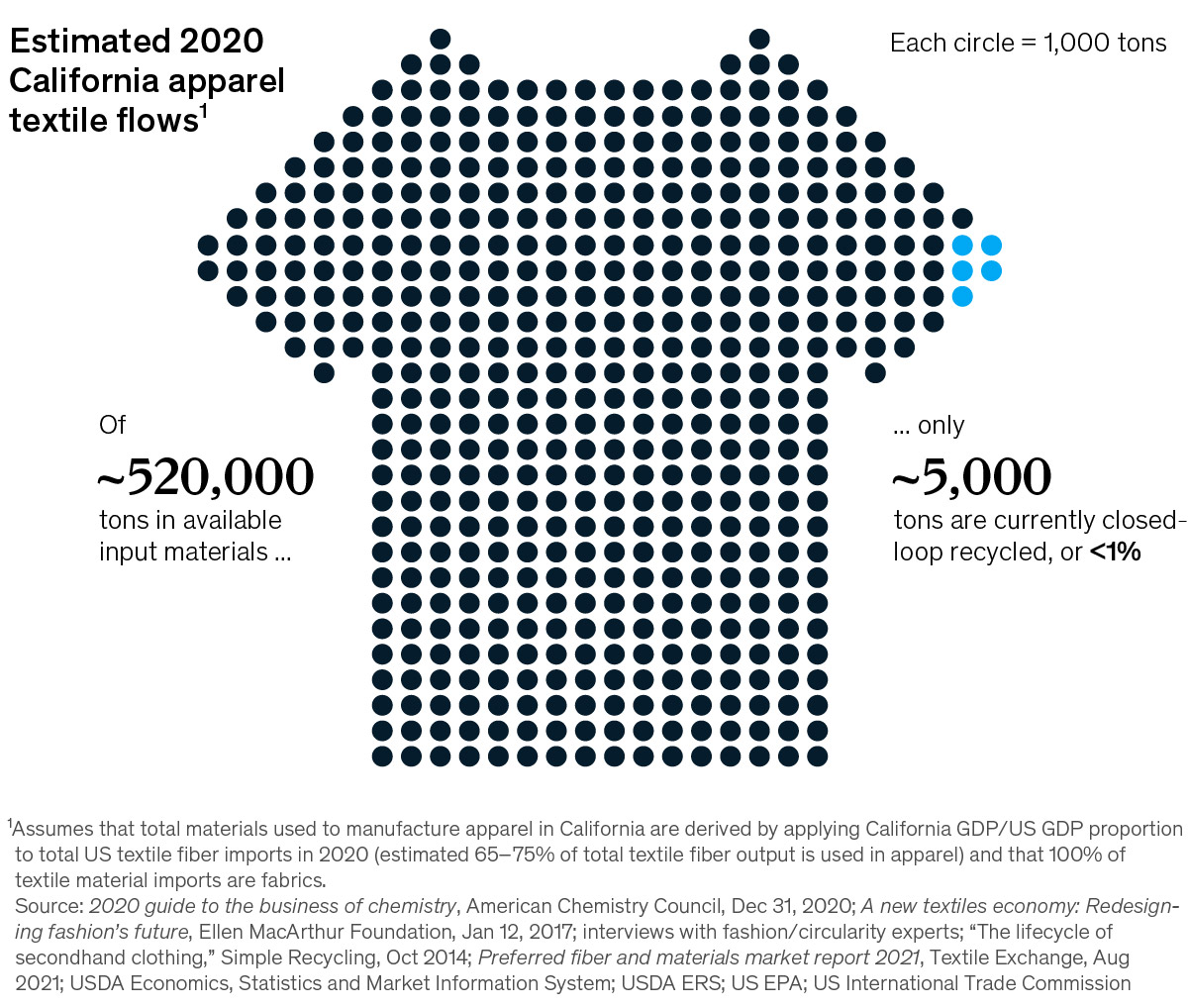
Check out our chart of the day here. 

PODCAST Is worker power on the rise? The answer is: it depends. Knowledge workers with skills that are easily portable across employers and geographic locations have power. Folks who are in jobs that require them to be on-site or in person, such as service-related jobs, are still grappling with local labor markets with very different dynamics. That said, as the Great Attrition persists, employer–employee dynamics appear to be changing. In this installment of the McKinsey Talks Talent podcast, two McKinsey talent experts discuss who actually benefits in today’s labor market—and how durably. 
MORE ON MCKINSEY.COM Global Energy Perspective 2022 | The transition to a lower-carbon energy system continues and accelerates. Our new report provides insights into the longer-term trends that will continue to be essential in shaping future energy systems. Latin American physicians on the future of healthcare | In a survey, Latin American physicians said that COVID-19 caused them to see the benefits of shifting from fee-for-service to value-based care models that benefit all stakeholders in the system. Philippines economic outlook | Three shifts introduced during the COVID-19 crisis will persist: economic activity will be digitally enabled but also hyperlocal; the wealth gap is widening; and the pandemic is likely to result in a greener and more sustainable economy. 
PARTING QUOTE 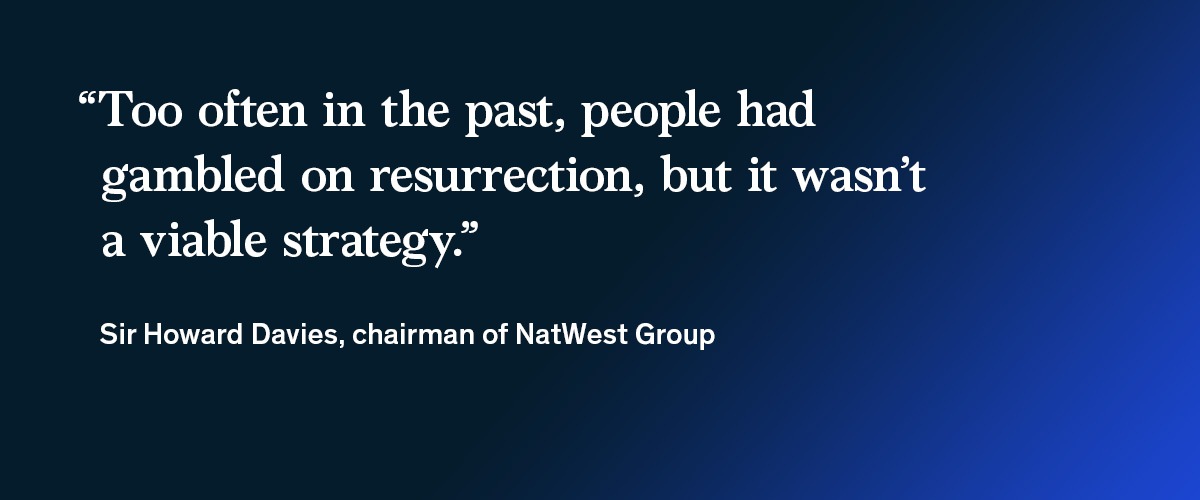
— Edited by Barbara Tierney 
BACKTALK Have feedback or other ideas? We’d love to hear from you. 
Tell us what you think 

Follow our thinking 



Share these insights Did you enjoy this newsletter? Forward it to colleagues and friends so they can subscribe too.
Was this issue forwarded to you? Sign up for it and sample our 40+ other free email subscriptions here.This email contains information about McKinsey’s research, insights, services, or events. By opening our emails or clicking on links, you agree to our use of cookies and web tracking technology. For more information on how we use and protect your information, please review our privacy policy. You received this email because you subscribed to The Shortlist newsletter. Manage subscriptions | Unsubscribe Copyright © 2022 | McKinsey & Company, 3 World Trade Center, 175 Greenwich Street, New York, NY 10007
by "McKinsey Shortlist" <publishing@email.mckinsey.com> - 01:22 - 20 May 2022 -
What’s changed about consumer behavior? Plenty—but much has stayed the same, too.
McKinsey&Company
Highlights from our Consumer Pulse survey .

Keeping up with consumers In the news • Bracing for sluggish sales. Demand for everything from toothpaste to soft drinks surged during the COVID-19 pandemic, even as US consumer goods giants raised prices to cover increases in the cost of labor, materials, and shipping. But now, top industry leaders are bracing for a slowdown in sales: analysts say that US consumer confidence may decline as high inflation cuts into spending power. Some companies, anticipating that consumers will tighten their purse strings, are debuting more affordable products and streamlining packaging. [Reuters] • Party like it’s 2019. Many Americans are returning to the shopping, entertainment, and travel habits they had before the COVID-19 crisis began. Although it once seemed that people would be stockpiling cleaning products forever, year-to-date sales of hand sanitizer have dipped more than 50% from their levels a year ago. The spending habits and lifestyles of Americans changed dramatically in March, when many schools stopped enforcing mask mandates and COVID-19 got less press coverage. [WSJ] 
Only 38% of survey respondents said they feel optimistic, down from 44% in October 2021. 
On McKinsey.com • No penny pinchers here. US consumers are embracing new ways of doing things as they go back to their familiar old behavior, McKinsey’s latest Consumer Pulse survey shows. Americans are spending more online, but they’re also returning to brick-and-mortar stores. They’re leaving their homes again but still spending on home improvement. Although inflation is at its highest level in 40 years, US consumers continued to open their wallets in early 2022. In March, US consumers spent 18% more than they did two years earlier, and credit card debt is rising again. • Battle of the brands. Americans are still switching to different brands and retailers in 2022, and about 90% of them intend to keep shopping around, McKinsey analysis reveals. A top motivation for brand-swapping is concern over high prices. In light of inflation, US consumers are now looking for value, and when they decide what to buy, brand purpose is less of a factor now than it was in 2020. Explore seven charts (from our survey) that highlight how US consumers are feeling, shopping, and spending—and what companies can do to satisfy their quickly changing expectations. — Edited by Belinda Yu See what’s changed for consumers 
Was this forwarded to you? Sign up here. Or send us feedback — we’d love to hear from you. 

Follow our thinking 


This email contains information about McKinsey’s research, insights, services, or events. By opening our emails or clicking on links, you agree to our use of cookies and web tracking technology. For more information on how we use and protect your information, please review our privacy policy. You received this email because you subscribed to the On Point newsletter. Manage subscriptions | Unsubscribe Copyright © 2022 | McKinsey & Company, 3 World Trade Center, 175 Greenwich Street, New York, NY 10007
by "McKinsey On Point" <publishing@email.mckinsey.com> - 12:40 - 20 May 2022 -
Time’s Running Out—Update Your Profile & Unlock a High-Value Content Piece Today!
Time’s Running Out—Update Your Profile & Unlock a High-Value Content Piece Today!

Elevate Your Experience






Dear Md Abul,
Your personalized content plan is just one step away. And with it, early-access to a handpicked asset featuring the latest industry insights!* All you need to do is take a moment to update your profile.
Update profile now 

Don’t miss the chance to stay ahead of the curve with high-quality content curated especially for Intel subscribers.
Hurry! The promotion closes on 31st May.

* Terms and conditions apply.
Intel is committed to respecting human rights and avoiding complicity in human rights abuses. See Intel’s Global Human Rights Principles. Intel’s products and software are intended only to be used in applications that do not cause or contribute to a violation of an internationally recognized human right.
© Intel Corporation. Intel, the Intel logo, and other Intel marks are trademarks of Intel Corporation or its subsidiaries.
Other names and brands may be claimed as the property of others.
This was sent to info@learn.odoo.com because you are subscribed to Offers & Promotions. To view and manage your email preferences or to unsubscribe from marketing-related emails from Intel, please click here.
© 2022 Intel Corporation
Intel Corporation, 2200 Mission College Blvd., M/S RNB4-145, Santa Clara, CA 95054 USA. www.intel.comPrivacy | Cookies | *Trademarks | Unsubscribe | Manage Preferences
by "Intel Corporation" <intel@plan.intel.com> - 11:06 - 19 May 2022 -
The WTO director-general in conversation on trade, vaccines, and sustainable, inclusive growth
the Daily read
Address challenges .
Share this email 



AN ARTICLE A DAY, PICKED BY OUR EDITORS 
Curious about how one of the world’s most influential women is thinking about trade and more? Don’t miss this conversation with the director-general of the World Trade Organization, Ngozi Okonjo-Iweala, who happens to be the first woman and first African in the role. From the ways the pandemic affected global trade to vaccine access in emerging economies and what an equitable recovery might look like, this lively conversation covers a lot of ground. Check it out, and subscribe to the McKinsey Global Institute’s Forward Thinking podcast if you like what you hear. — Torea Frey, managing editor, Seattle 
Forward Thinking on trade, vaccines, and sustainable and inclusive growth with WTO Director-General Ngozi Okonjo-Iweala The World Trade Organization’s first African—and first female—director-general reflects on the impact of the pandemic on trade, the imperative to ensure that vaccines reach Africa and other emerging economies, and how to ensure that trade is more inclusive in the years ahead. Address challenges 

Quote of the Day “[An] important part of a successful digital transformation is how you define what ‘good’ really looks like here. Because there isn’t a point in time when digital transformation is done. It’s much more about, ‘How am I building a real muscle for the organization to continue getting better and better as I go on?’” —Kate Smaje, McKinsey senior partner, on why digital transformation should be front and center on the CEO agenda in a recent episode of The McKinsey Podcast 
Chart of the Day 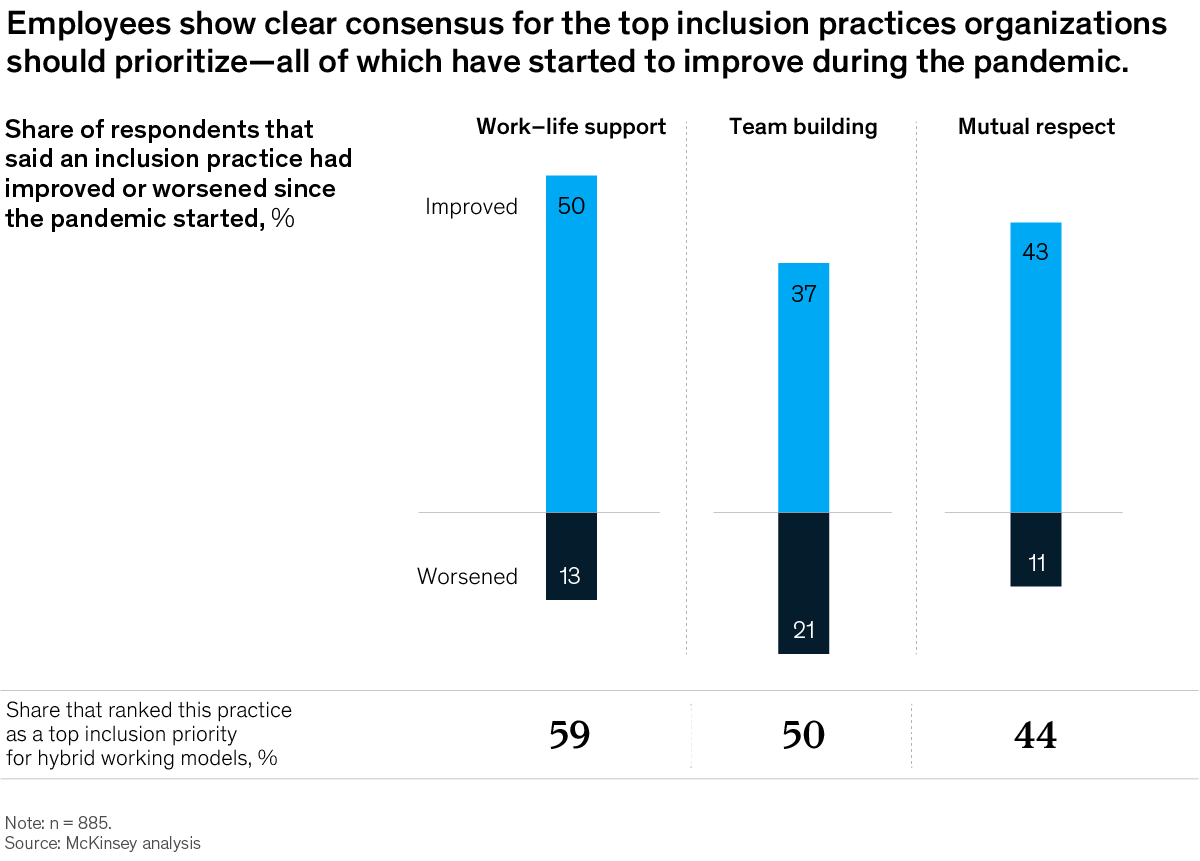
See today’s chart 
Also New 

Can the automotive industry scale fast enough? The rapidly increasing uptake of electric vehicles could transform the automotive ecosystem and promote even greater innovations. For that to happen, two imperatives need attention now. Speed up 
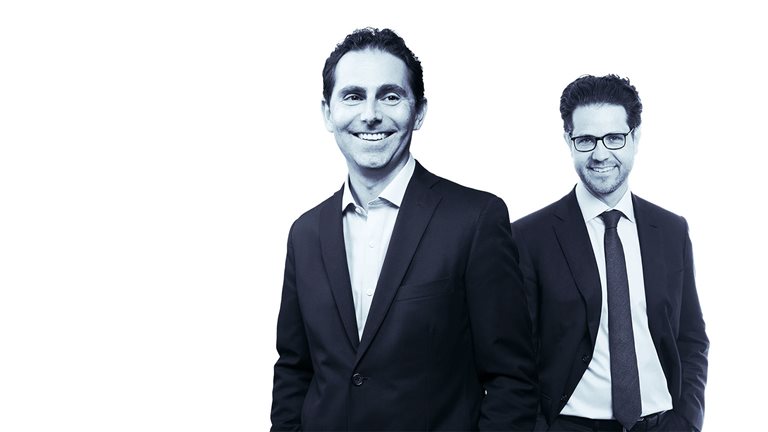

A wave of innovation: The state of insurance in Asia and North America McKinsey senior partners Brad Mendelson and Kurt Strovink discuss insurance trends amid the COVID-19 pandemic and how insurers can adapt to stay ahead and capture customers. Keep up 


How biotechs can rethink their strategies after the market downturn Biotech stocks have taken a hit, but the sector will probably rebound. Companies can navigate the downturn by scrutinizing cash management and financing and rethinking paths to long-term value creation. Survive and recover 


Follow our thinking 



Share these insights Did you enjoy this newsletter? Forward it to colleagues and friends so they can subscribe too.
Was this issue forwarded to you? Sign up for it and sample our 40+ other free email subscriptions here.This email contains information about McKinsey’s research, insights, services, or events. By opening our emails or clicking on links, you agree to our use of cookies and web tracking technology. For more information on how we use and protect your information, please review our privacy policy. You received this email because you subscribed to the Daily Read newsletter. Manage subscriptions | Unsubscribe Copyright © 2022 | McKinsey & Company, 3 World Trade Center, 175 Greenwich Street, New York, NY 10007
by "McKinsey Daily Read" <publishing@email.mckinsey.com> - 05:05 - 19 May 2022 -
Spend 5 minutes to save yourself hours
We get it, you’re busy. But not having visibility into your apps and systems can cause some serious headaches down the road.
It only takes 5 minutes to get started with our new and improved guided install, an intelligent and automated instrumentation experience.
With New Relic One, you get 100GB of free data each month to visualize, analyze, & troubleshoot your entire stack with access to the entire platform, including APM, Infrastructure Monitoring, Digital Experience Monitoring, Applied Intelligence, and more.
You can also learn more by visiting our Explorers Hub, where Relics and the Data Nerd Community come together to share the latest information, get help with troubleshooting problems, and find the inside track to getting the most out of the platform.
INSTALL NOW Happy monitoring,MaxNew Relic
188 Spear Street, San Francisco, CA 94105 US
by "Max Francisco from New Relic" <mfrancisco@newrelic.com> - 12:03 - 19 May 2022 -
Statista Market Data
Hi Abul,
Thank you for exploring Statista, I hope you found our data useful!
[Short Background] Statista is a business and market data platform for sectoral and consumer data, covering 80,000 topics on a global basis and specifically the digital economy. Our platform looks at the market sizing and the future forecast for digital market, healthcare, technology etc.. that would be benefit your work and business!
We provide our client with reliable data as fast as possible from over 22,500 sources (McKinsey, Kantar, IDC, Gartner, PWC) helping them in forming insightful go-to-market strategies.
It would be my pleasure to discuss with you to understand your needs and priorities to see how Statista can help with.
May I suggest a quick 30-minutes Zoom meeting next week?
Thank you!
Kind regards,Warin Chokwanitphong (Sai)
Head of Commercial Thailand
Statista Pte Ltd
Mobile: 088-692-2688
Information about the timing of deleting personal data, the countries where we save data (e.g., U.S., EU, UK, Singapore), and the companies we collaborate with can be found in our privacy statement
by "Warin Chokwanitphong" <warin.c@statista.com> - 03:24 - 19 May 2022 -
Intersection is taking a brief break
McKinsey&Company
We appreciate your patience .
Share this email 



Thanks for your ongoing interest in Intersection, our weekly newsletter devoted to delivering on diversity, gender equality, and inclusion. Intersection will be taking a brief break, but we’ll be back in your inbox in June to continue sharing our research and insights on these critical topics. In the meantime, you can always browse through past issues here, including recent favorites on making workplaces work for moms, celebrating LGBTQ+ youth, and why every hospital needs a garden. If you have friends or colleagues you think might enjoy Intersection when it’s back, we hope you’ll consider forwarding this email or sharing it on LinkedIn, Twitter, or Facebook. If they want to get future issues in their inbox—or to see our 40+ other free email products—they can sign up at mckinsey.com/subscriptions. (You might want to check it out too, to revisit your subscriptions or find out about any new ones.) 

Follow our thinking 


McKinsey Insights - Get our latest
thinking on your iPhone, iPad, or Android

This email contains information about McKinsey’s research, insights, services, or events. By opening our emails or clicking on links, you agree to our use of cookies and web tracking technology. For more information on how we use and protect your information, please review our privacy policy. You received this email because you subscribed to the Intersection newsletter. Manage subscriptions | Unsubscribe Copyright © 2022 | McKinsey & Company, 3 World Trade Center, 175 Greenwich Street, New York, NY 10007
by "McKinsey Intersection" <publishing@email.mckinsey.com> - 01:29 - 19 May 2022



.png?width=1200&upscale=true&name=Group%201%20(6).png)

